The beautiful villages with back doors into Europe’s best skiing areas
- Oops!Something went wrong.Please try again later.
- Oops!Something went wrong.Please try again later.
For many skiers, modern ski resorts with slick infrastructure, plenty of lifts and an extensive network of runs are an essential part of the experience.
But this convenience often comes at a price, with purpose-built towns long on function and short on charm.
But it’s still possible to enjoy an authentic alpine experience while dialing in to the best the mega resorts have to offer.
Here are six atmospheric mountain spots where skiers can be at one with the old ways and still connect to the skiing superhighway.
Valtournenche, Italy
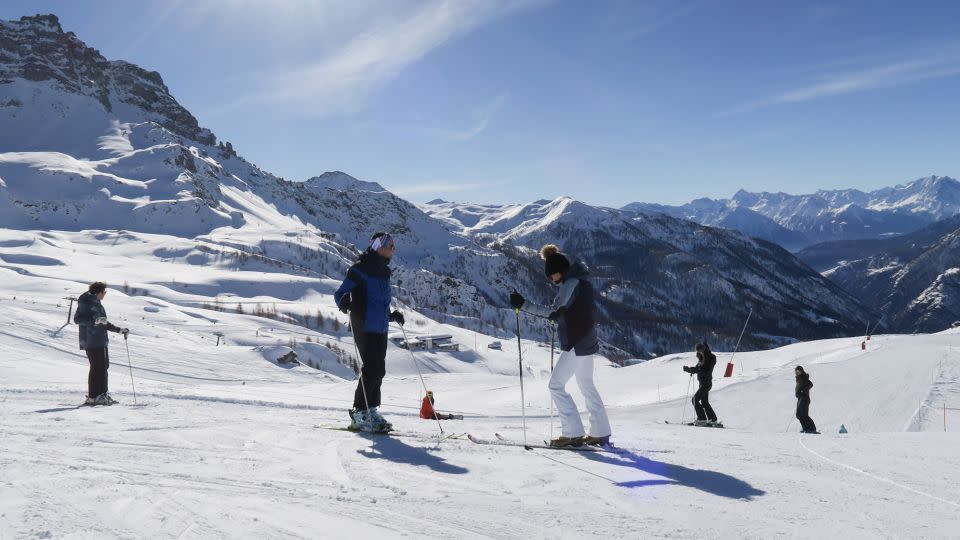
The mighty Matterhorn stands sentinel at the head of a snaking tributary to the north of Italy’s Aosta valley.
Popular winter resort Breuil-Cervinia sits at its foot, while Swiss gem Zermatt lies over the mountain.
The ski lifts of the two areas connect at the Theodul Pass, making up a stellar system of borderless skiing surrounded by some of the Alps’ loftiest peaks.
The high point is 3,883 meters at the top of the crisp, modern Matterhorn Glacier Paradise lift.
But just a 10-minute drive below Cervinia is the unheralded village of Valtournenche, home to late mountain guide Jean-Antoine Carrel, who with his friends, competed with British climber Edward Whymper to be the first to scale Monte Cervino, as the Matterhorn is known in Italian.
Whymper, who began from Switzerland, won the race. But tragedy struck when four of his team died on the way down. Carrel’s crew, who had started in Italy, topped out three days later in July 1865.
A glimpse into Valtournenche’s past can be found in the narrow, roof-touching alleys around the white-washed church, with plaques to the guides on the walls of the square.
Maison de l’Alpage, a museum dedicated to the area’s old ways of living and farming, is housed in a converted barn known as a “rascard.”
A long gondola takes skiers up to Valtournenche’s compact ski area, from where a (sometimes) heated chairlift whisks visitors over to the Cervinia system and the white playground of Zermatt beyond.
Slope side on the home run back down to Valtournenche (also reachable by car) is the Foyer des Guides, a mountain bar and restaurant run by Sabrina and Walter, descendants of original guides, who serve Aostan specialities in a smart chalet with a sunny terrace.
St. Martin de Belleville, France
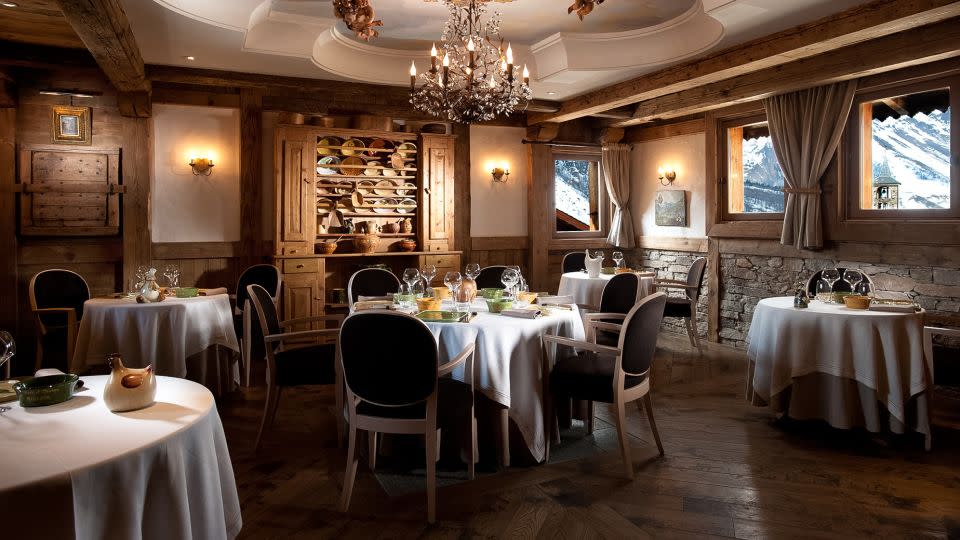
France’s vast Les 3 Vallees has long claimed to be the world’s largest ski area, and with good reason.
The ski area holds 600 kilometers of runs draped across three large valleys, ranging from classy Courchevel at one end, through Meribel to Les Menuires and high-altitude Val Thorens (“ValTho” as the locals call it) at the other.
In fact, there are actually four valleys, because the handful of lifts above Orelle have long been linked in.
And hidden in plain sight among the big-name resorts is the quiet hamlet of St. Martin de Belleville, once a sleepy collection of farmsteads, now an authentic alternative ski base for those in the know.
It sits in the Belleville valley below Les Menuires, with a quick link to the Tougnete ridge above Meribel from where the entire Les 3 Vallees is your wintery oyster.
For gastro lovers, St. Martin has another very big draw in the form of the celebrated La Bouitte, a three Michelin-star restaurant run by father and son team Rene and Maxime Meilleur, whose cooking is a modern twist on traditional Savoyard dishes.
La Bouitte, which means “small house” in the local dialect, grew out of a small potato patch bought by Rene in 1976.
Originally accessed by off-piste skiers, it’s now both a hotel and restaurant, as well as a go-to spot for gourmands, featuring a separate bistro and spa.
Vaujany, France
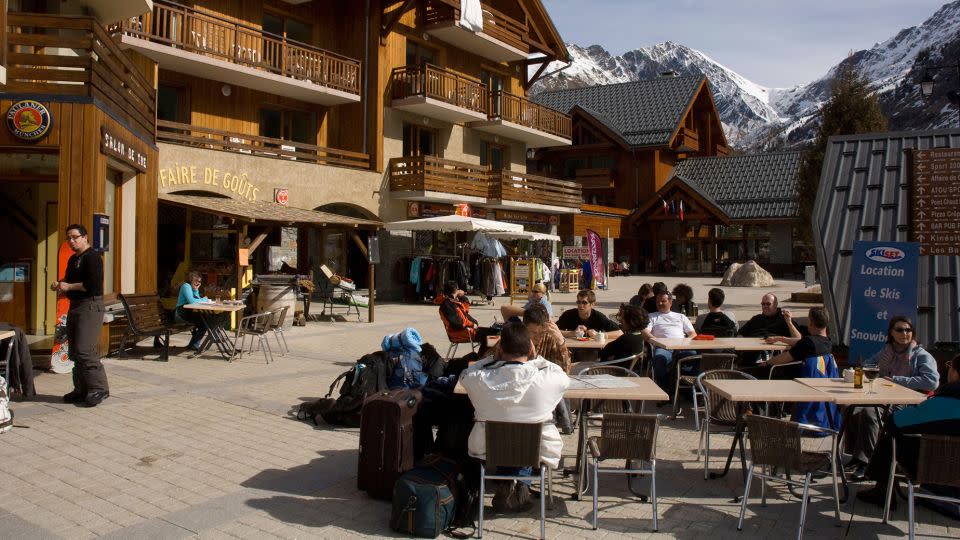
Cycling fans will likely have heard of this village’s famous neighbor Alpe d’Huez from the legendary tales of Tour de France riders battling up the 21 hairpins to the stage finish in the town.
For skiers and boarders, Alpe d’Huez is an extensive, functional winter resort in the southern Alps with 248 kilometers of runs and 84 lifts climbing to a height of 3,330 meters in a series of sunny south-facing bowls.
Full of wood and stone chalets, churches, farms and authentic charm facing the Massif des Grandes Rousses, Vaujany lies back down in the valley at about 1,250 meters.
With just a smattering of local bars and restaurants – La Table de la Fare is the spot for apres ski drinks, while Le Stou, near the swimming pool, is good for food – it’s definitely not one for the party animals.
A leisure center, ice rink and bowling alley add to the off-slope activities.
The Montfrais gondola or long Alpette cable car deliver skiers into the Alpe d’Huez system, from where they can venture over to the summit of the Pic Blanc (3,330 meters) to tackle the Sarenne, the world’s longest black run at 16 kilometers (10 miles) in length.
For off-piste lovers, the Combe du Loup (Valley of the Wolf) offers a variety of sometimes powdery terrain with views across to the famed extreme ski village of La Grave and La Meije (3,984 meters) mountain above.
“It’s a small, traditional mountain village with all the infrastructure and ease of a big resort,” says Steph Bridge, owner of Chalet Polaris in Vaujany.
“The locals cling on to the old traditions and there are chickens, vegetable patches, and marmottes and chamois running free in the mountains.
“We love coming back at the end of the day and sitting on the terrace in the warm evening sunshine, even in January, and soaking up the sunset.”
Warth-Schröcken, Austria
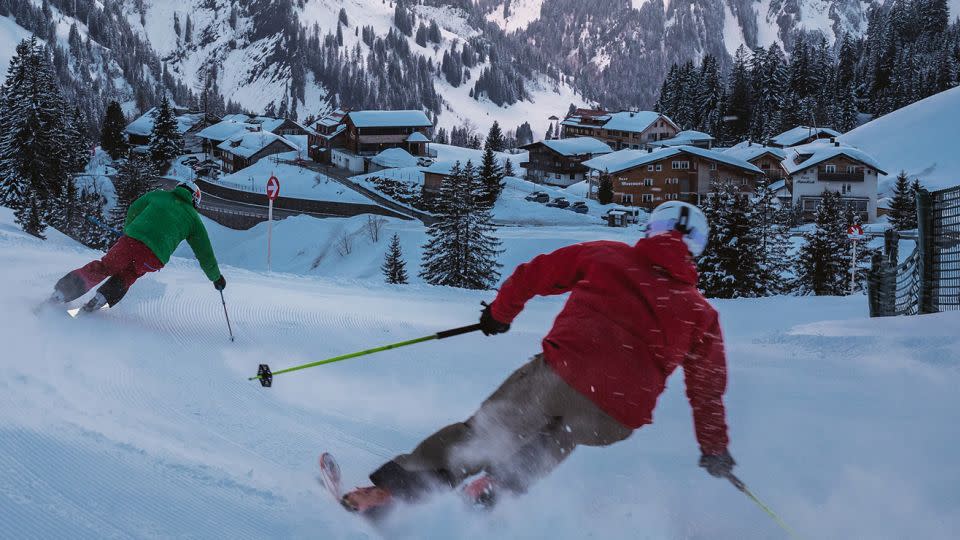
These two former farming villages, accessed only by mule tracks until the beginning of the 20th century, struck gold a decade ago when their shared compact ski area was finally linked into the vast Arlberg system by the two-kilometer Auenfeldjet gondola.
This backdoor access to the famed resorts of Lech, Zurs and St. Anton opened up Austria’s largest ski area, with about 300 kilometers of runs and 85 lifts.
The Run of Fame is an 85-kilometer loop around the whole region that speedy skiers can complete in a leg-draining day. The 22-kilometer White Ring around Lech and Zurs is another favorite.
Warth and Schröcken, which is considered to be among the snowiest spots in the Alps with 10 meters of powder a year, are spread out on a plateau on the edge of Vorarlberg and Tyrol.
If not quite the full alpine chocolate box, there are still many buildings in the wood-clad, sloping roof style of the Walser people who migrated here from the Swiss region of Valais from about the 14th century.
Of the two, Warth has the direct skiing access. But it exists at a slower pace, being much smaller than St. Anton or Lech, enjoying less of the hustle and frenzy of a powder day.
“Warth’s a quiet village tucked away at the back of the Arlberg but three lifts later and you’re into the Mecca of Lech and all that the ski area has to offer,” says Andy Butterworth, co-director of Kaluma Travel, which organizes luxury alpine escapes in St. Anton and Courchevel.
“There are a few lovely hotels that go under the radar that have really vibrant terraces for the sun drenched apres ski scene in March and April, such as the Berghotel Biberkopf and the Steffisalp.
Some people choose to ski over to Warth and Schröcken for an afternoon and night away from St. Anton and Lech and then ski back the next day.
“If you’re staying in Warth, don’t get settled at one of Lech’s champagne bars and miss the last lift, though. It’s an expensive and long taxi ride back.”
The dining spots are eclectic, ranging from traditional Austrian fare at places such as the Hotel Walserstube or Wälder Metzge, to finer dining at the “alpine urban” Bibers restaurant in the Biberkopf.
Le Praz, France
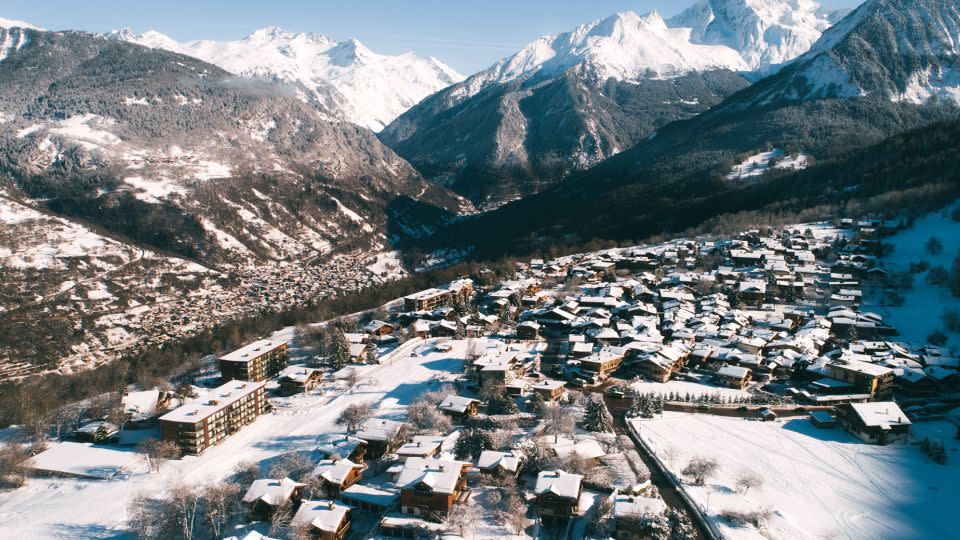
If Courchevel is queen of the French rich scene, then little Le Praz is her lady in waiting.
Located on a plateau at 1,300 meters (or 1300), the village is the first and most authentic of the resorts that make up Courchevel at various altitudes – 1550, 1650, and 1850.
The marketing department has renamed 1550 “Courchevel Village” and 1650 is now “Moriond” but most people stick to the numbers).
As the site of the Olympic ski jump from the 1992 Albertville Games, Le Praz is not exactly unknown – the village also hosted the finish of ski racing’s World Championships last year.
But with its narrow streets, pitched roofs and a more traditional alpine ambience, the village offers more of a snapshot of the old days than the rest of the resorts, despite recent development.
It’s a good place for gluttony, too, with the Bistrot du Praz, something of an institution and the four-star Hotel les Peupliers (now owned by the family of French world champion ski racer Alexis Pinturault) another favorite hangout for apres drinks or dinner in its Table de Mon Grand Pere restaurant.
La Petite Bergerie, a cozy spot in the sunken ground floor of an old stone chalet, serves Savoyard specialities.
A whizzy new lift and base station scoops skiers up into the heart of Courchevel 1850 and the riches of Les 3 Vallees beyond, while the Eclipse piste, refreshed and resculpted for the World Championships, offers a black run challenge back into the village.
“Le Praz still has that old-school soul and is the perfect antidote to the bling of 1850,” says Simon Hooper, owner of ski rental business White Storm in Courchevel.
“It feels like going back to simpler times. It’s a great place to hunker down in the depths of winter when the snowflakes are falling fat or soaking in the rays outside a bar or around the lake in spring.”
Montchavin, France
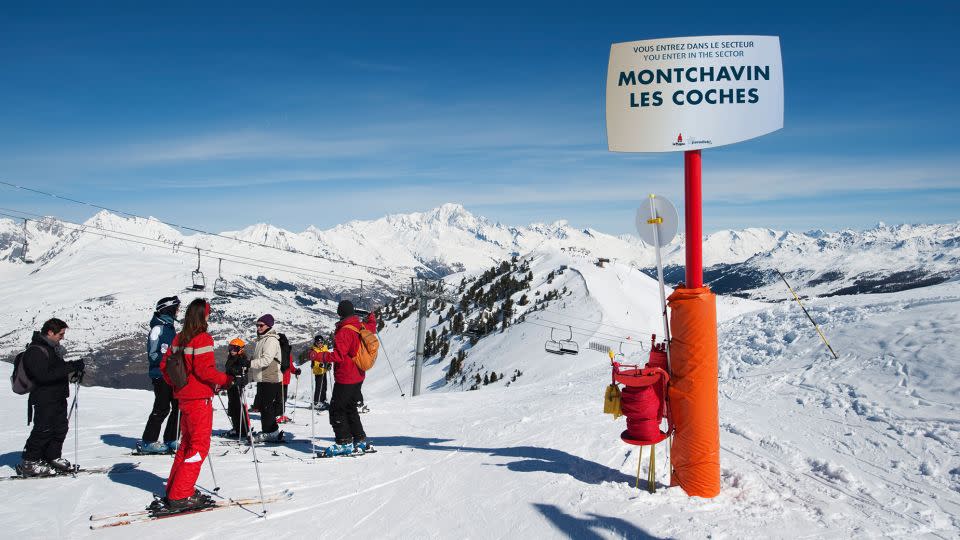
As mega resorts go, France’s Paradiski area is right up there – 425 kilometers of runs shared between the purpose-built resorts of La Plagne and Les Arcs high above the Tarentaise valley.
The two areas are linked across a deep valley by the double-decker Vanoise Express cable car, and with 70% of the skiing above 2,000 meters, it makes for a fairly snow-sure spot in a typical winter.
But if 1960s and onwards apartment block architecture is not your thing, the village of Montchavin could be your authentic key to the area.
Montchavin sits 1,250 meters in the forest on the La Plagne side of the Vanoise Express, offering car-free cobbled streets, wood and stone chalets and plenty of nods to its farming past.
At 1,450 meters, its neighbor Les Coches is another sympathetically developed unheralded option.
Although both link swiftly into the main lift system, they’re often missed by skiers scurrying between La Plagne and Les Arcs, which means that the tree-lined slopes can be peaceful even during busy periods.
La Bovate or La Ferme de Cesar, located in the center of Montchavin, are both atmospheric spots to “boire un coup” (have a drink) or sample Savoyard specialties such as raclette, reblochonnade (made from creamy alpine Reblochon cheese,) tartiflette or braserade (meat cooked on hot rock.)
For more CNN news and newsletters create an account at CNN.com

